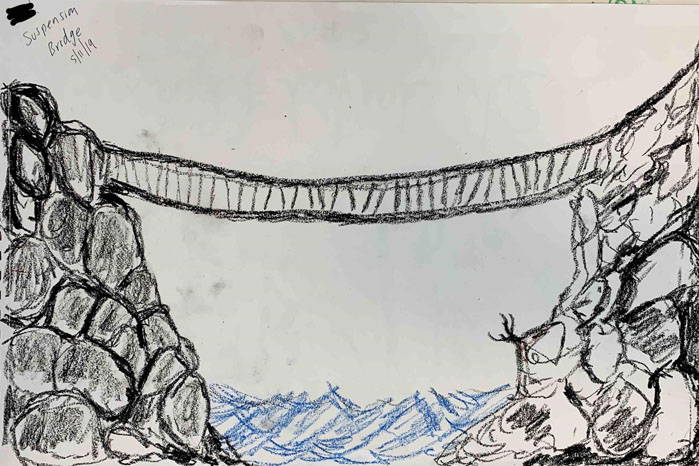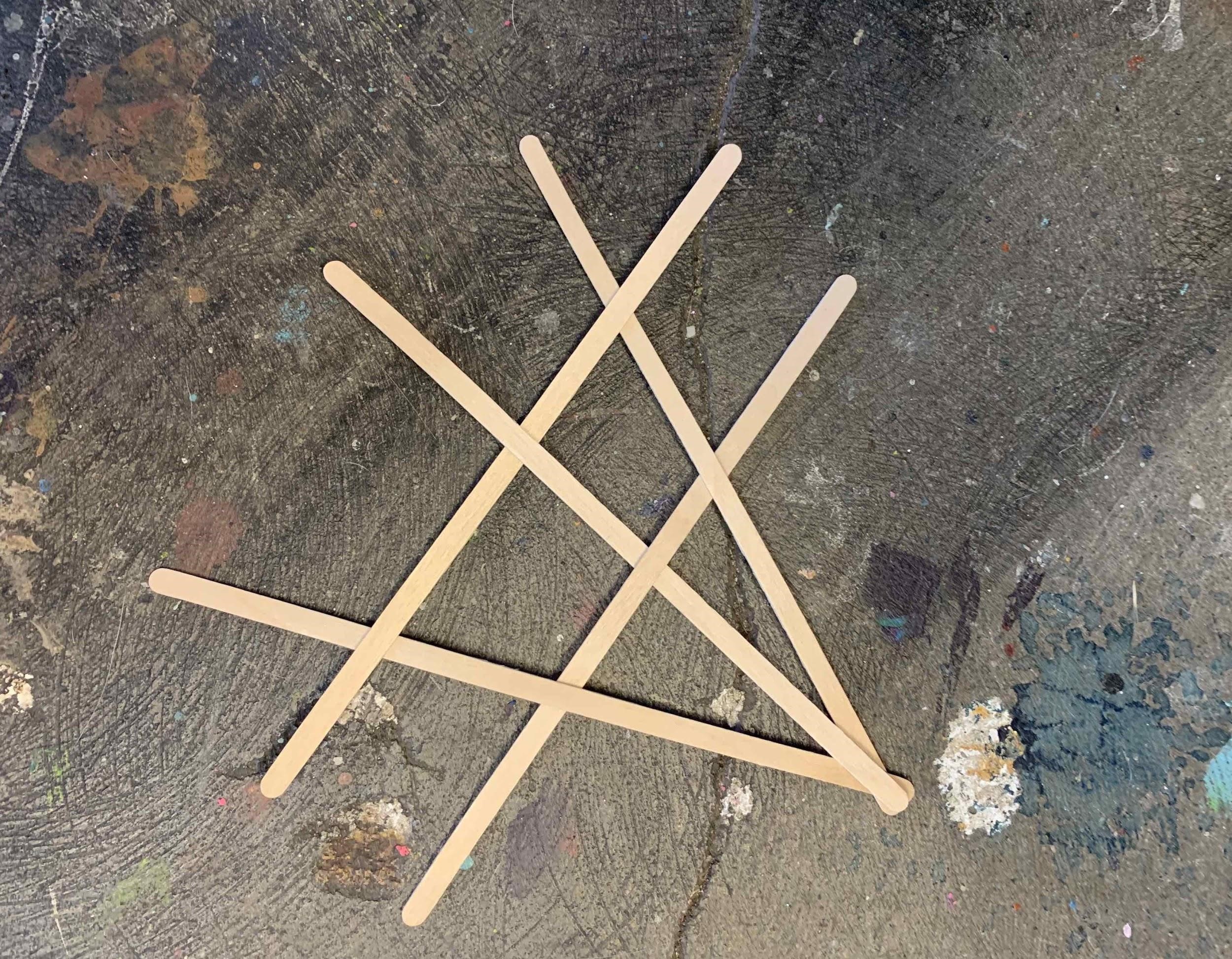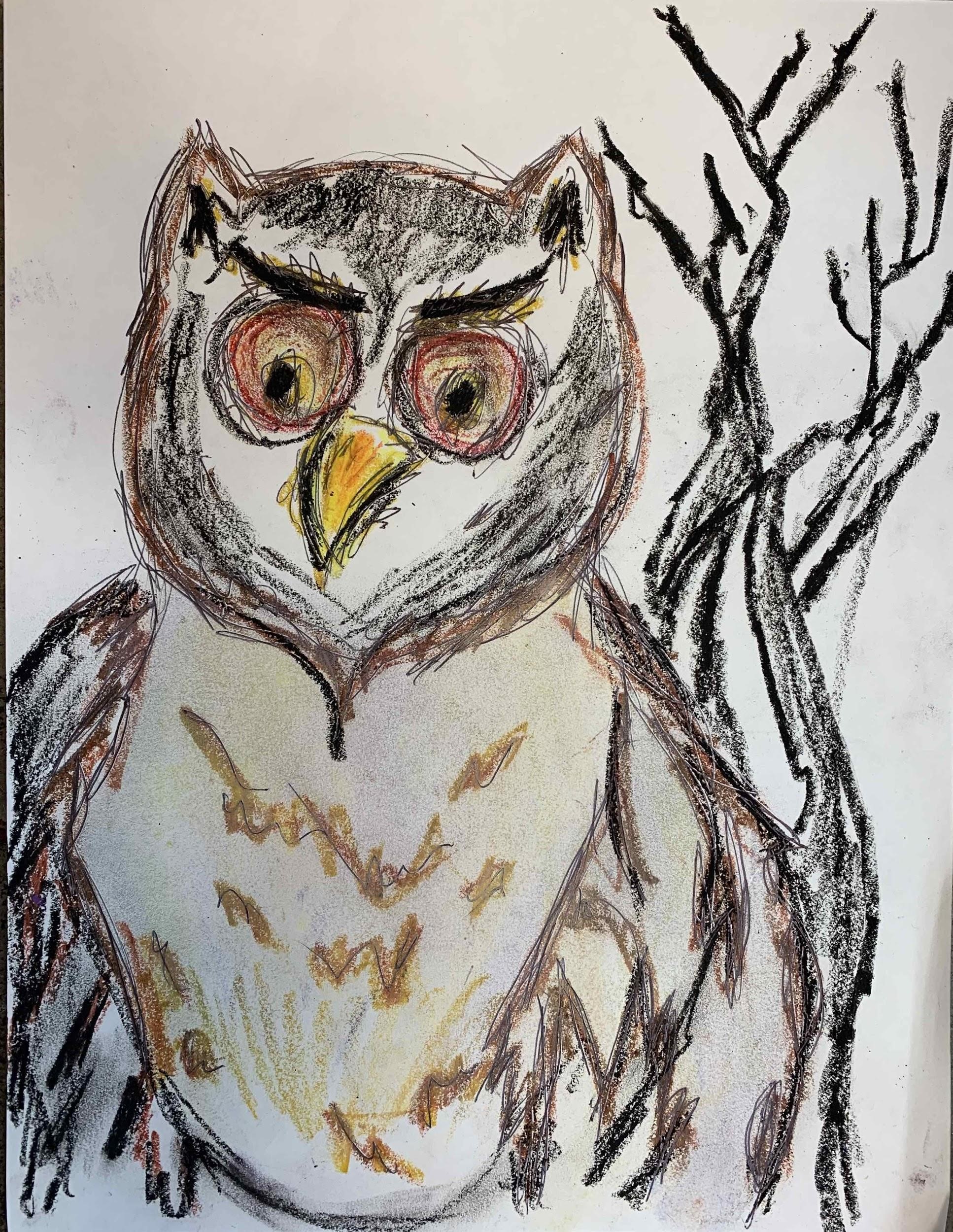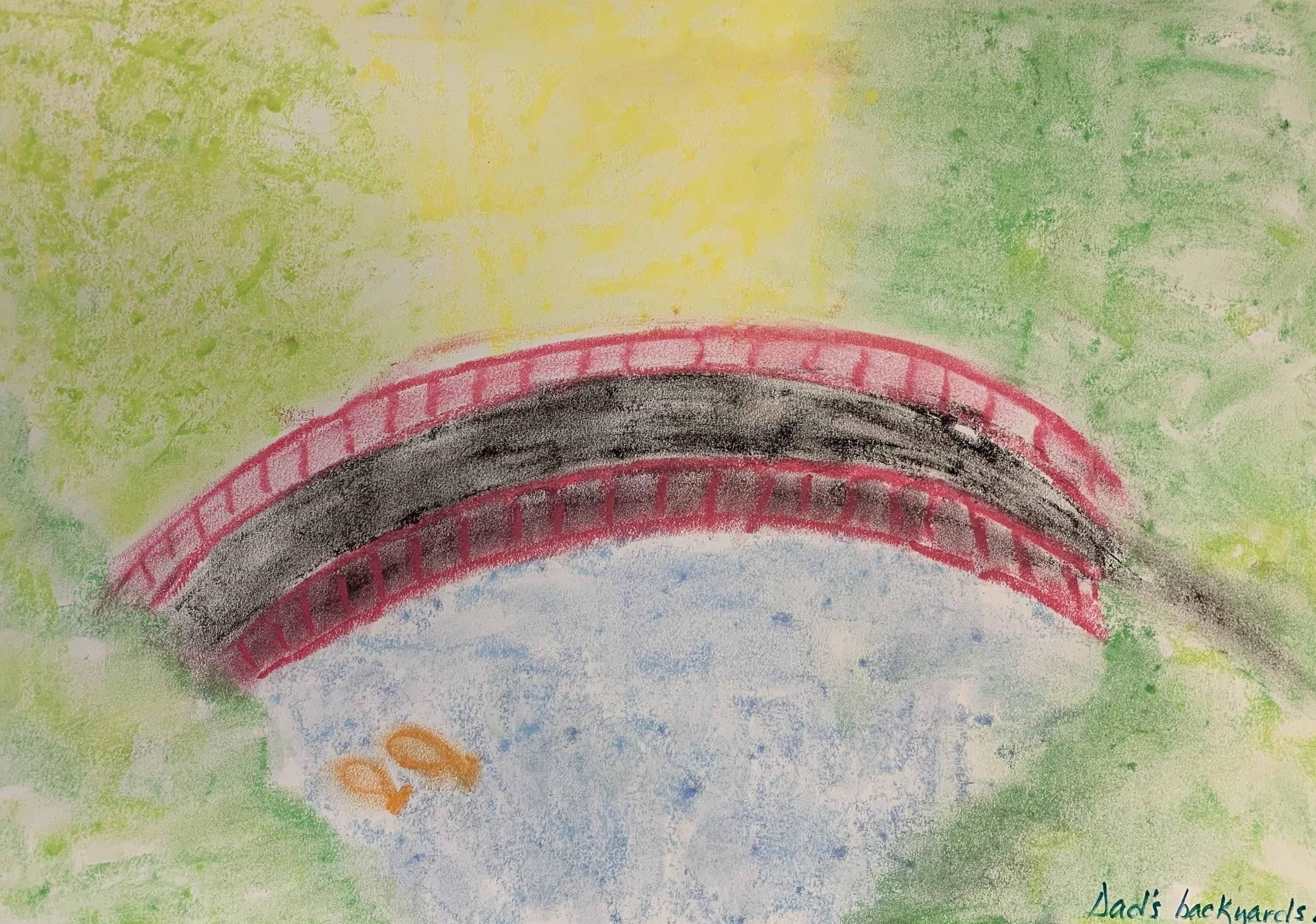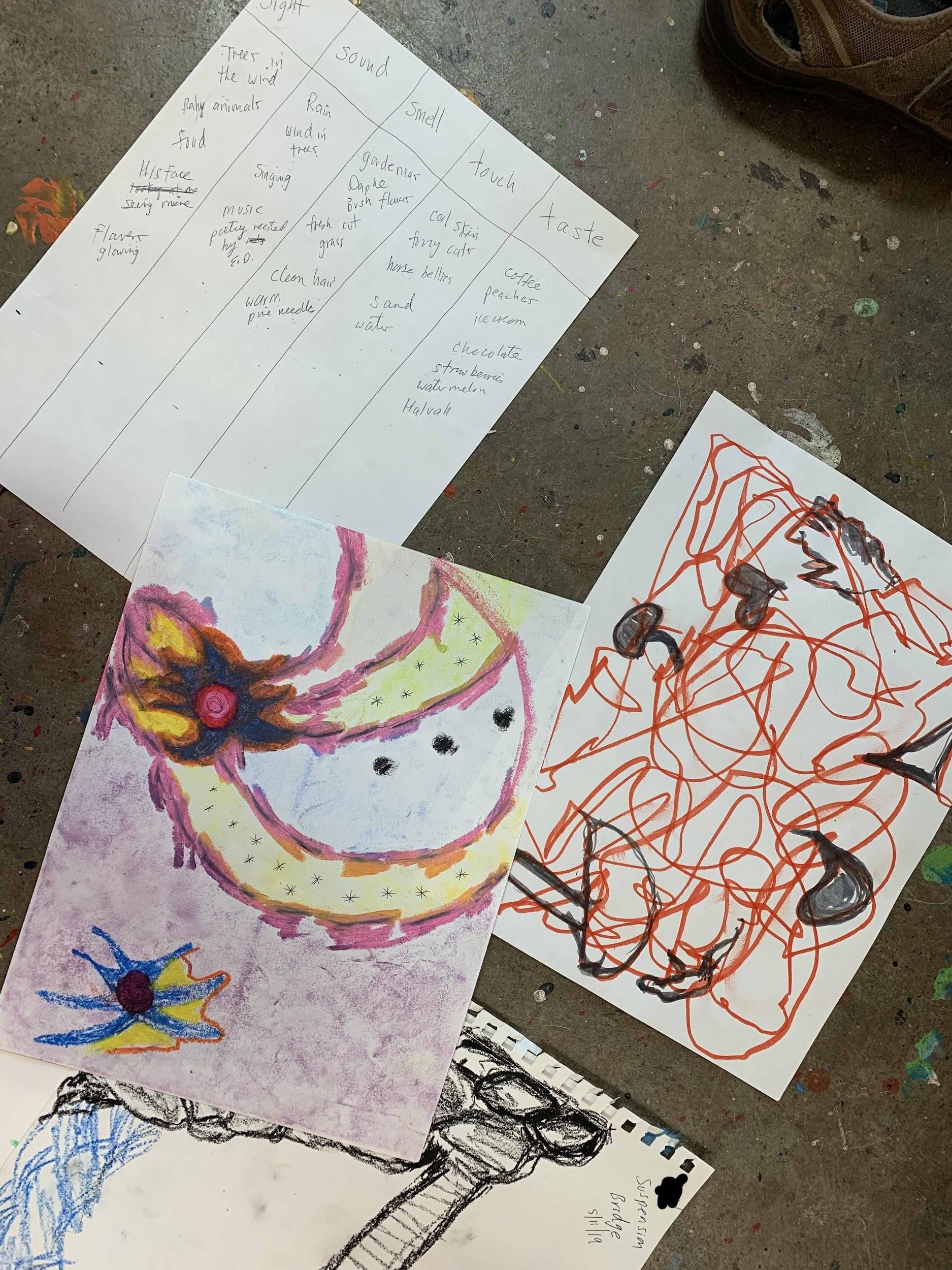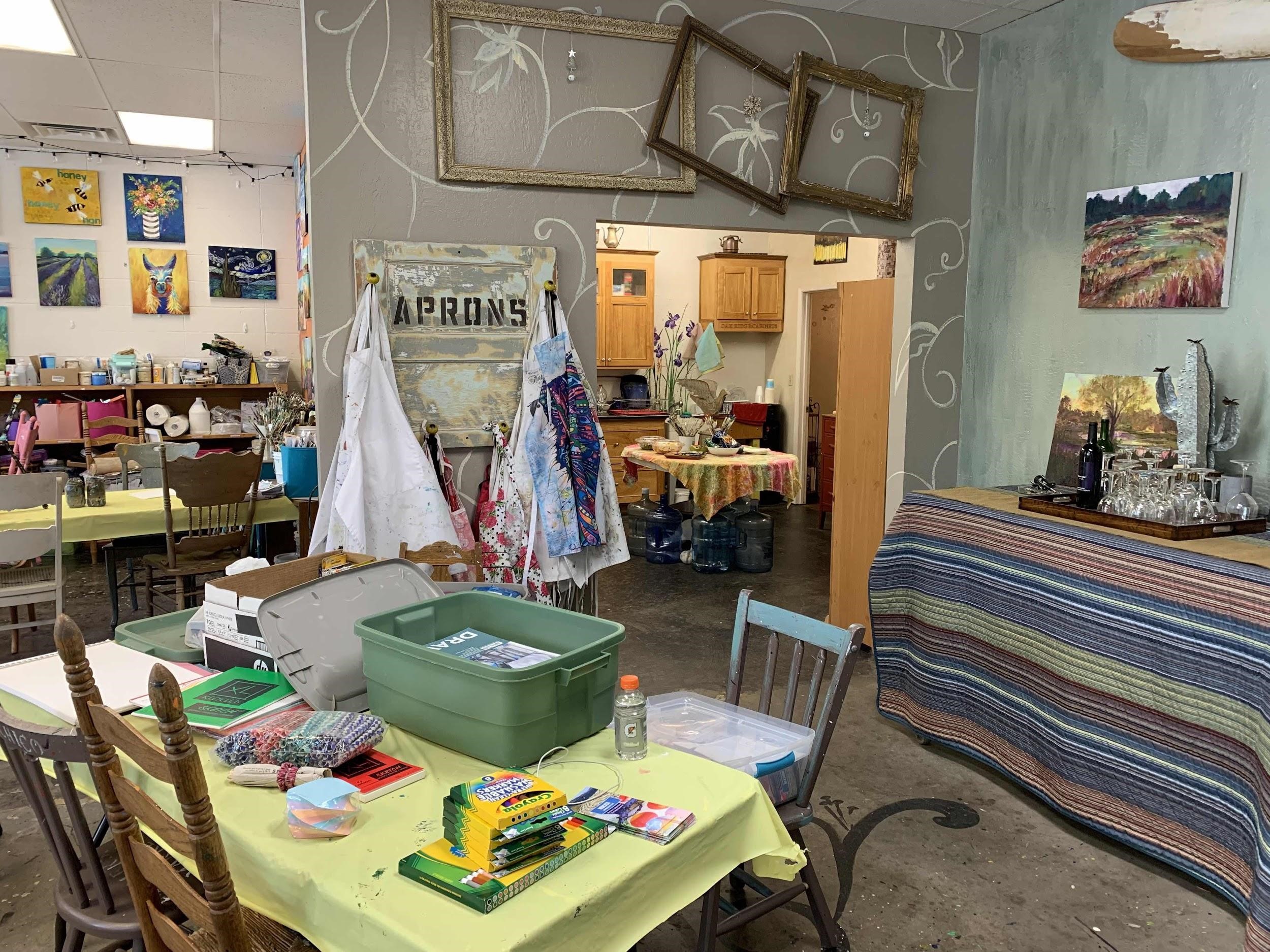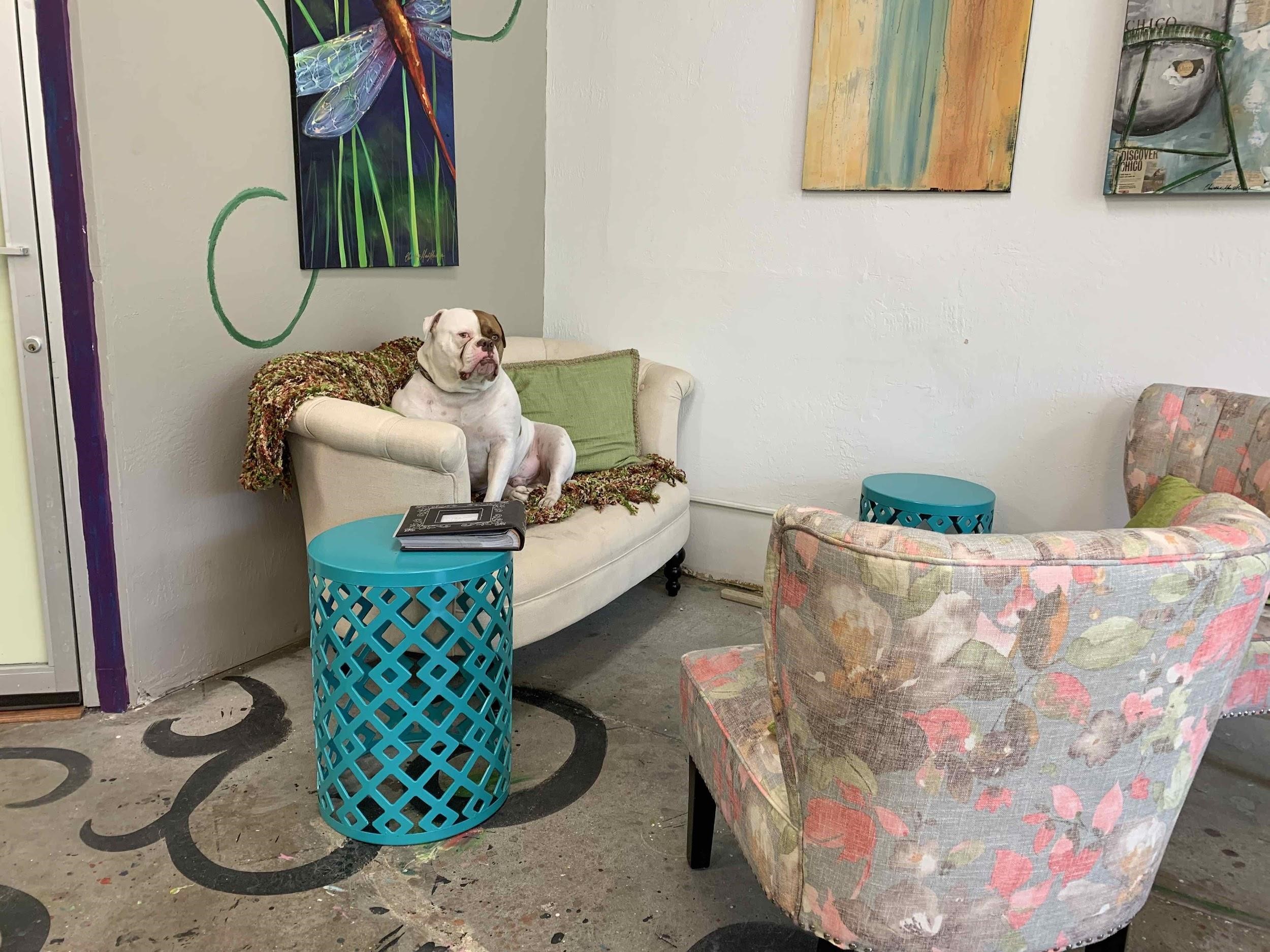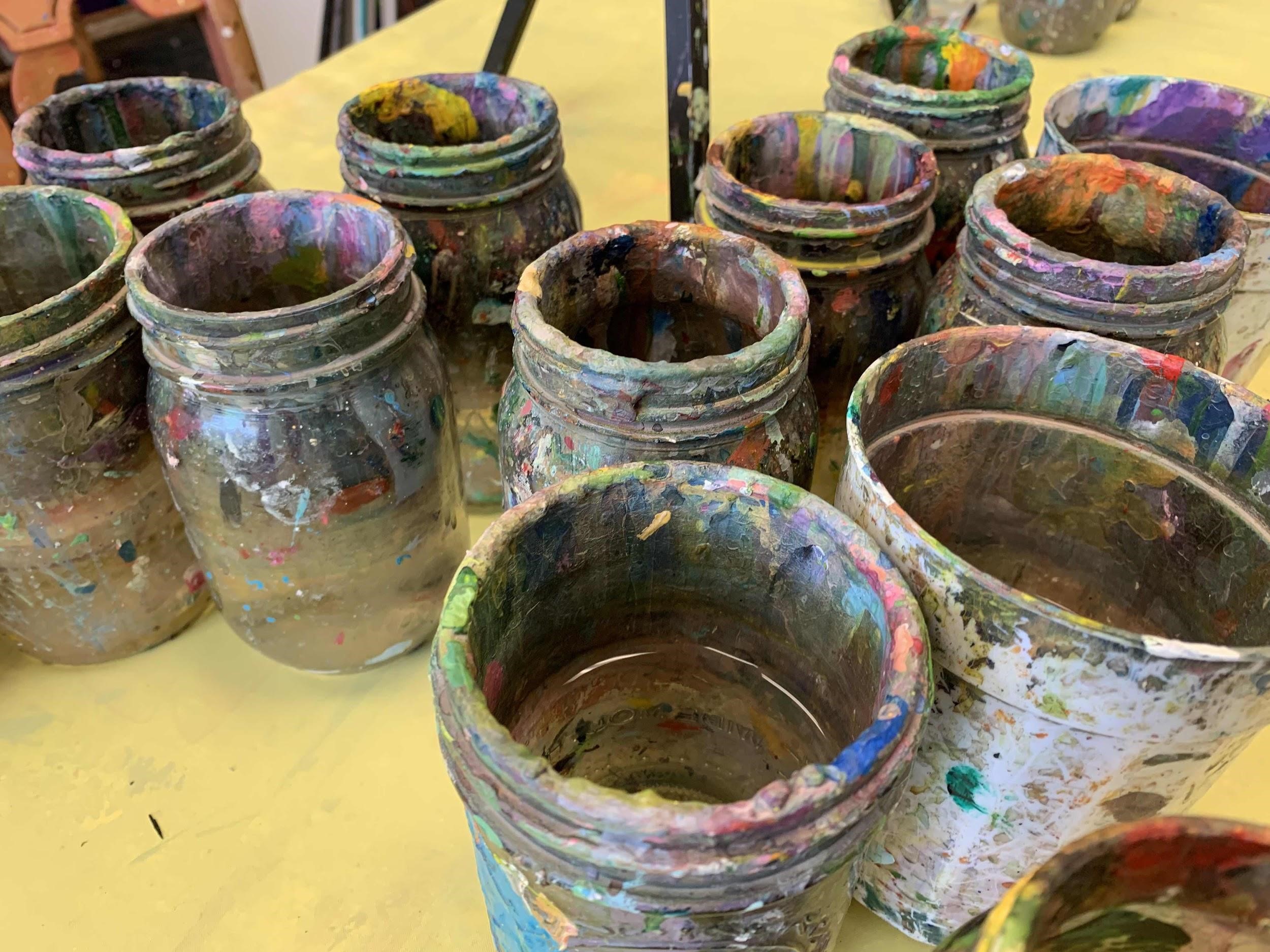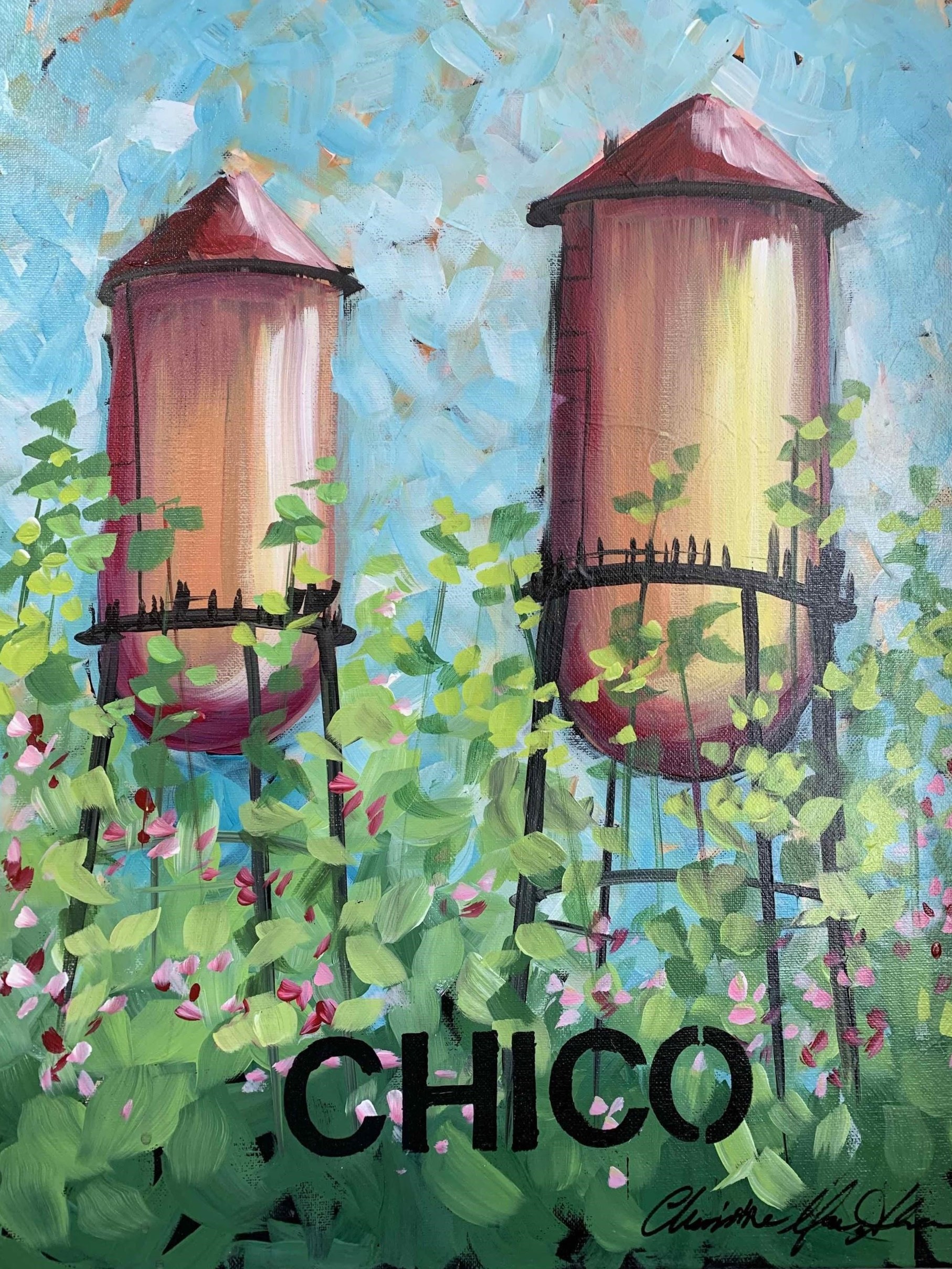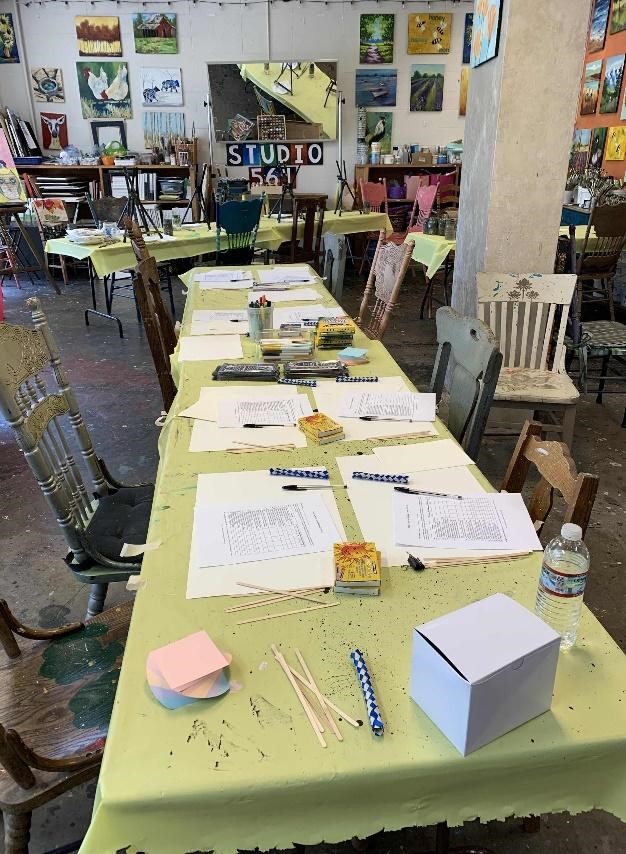Monthly Art Therapy Group Continues for Northern California Camp Fire Survivors
June 27, 2019 | By Devora Weinapple, MFT, ATR-BC | Community | Trauma | #WeAreArtTherapists
Note: Some images and text depict the immediate aftermath of the wildfire and some may find them disturbing.
.
On November 8, 2018, a wind-whipped inferno ripped through and leveled the densely populated foothill town of Paradise in less than a day. This urban firestorm, known as the Camp Fire, surpassed the worst fires to date in the state’s history, which had been those that devastated Sonoma and Mendocino Counties just in the previous fall of 2017. The Camp Fire caused 86 fatalities, and destroyed 19,000 homes and businesses with most of the damage occurring in the first four hours. It took seventeen days before the fire was fully contained.
Butte County Healing Arts Festival Prompts Monthly Support Group
Shortly after hearing reports about the Camp Fire, the Northern California Art Therapy Association (NorCATA) board members Cynthia Wilson, PhD, ATR-BC; Katrina Bobo, MFT Associate, PCC Associate, ATR; Robin Valicenti, MCAT, ATR-BC, LPC, and member Leah Moreno, LMFT, ATR, quickly convened to assess the situation and to determine what NorCATA might be able to do to help in the immediate aftermath. To start, Cynthia, our Acting President, offered the use of her previously arranged family timeshare in the area as a basecamp for the initial gathering of intel, as a drop-off point for art supplies and other donations, and to provide art therapy to some of the evacuees at East Avenue Community Church. Robin, our Legislative Affairs Director, had the initial idea of offering a three-day community wide healing arts festival. On January 5, 2019 Cynthia organized and implemented a one day event: the Butte County Healing Arts Festival, at the Chico Mall.
Twenty volunteers from NorCATA worked with 135 participating families from the community, assembled at thirteen different healing arts booths. It was clear that there was sufficient need to offer monthly art therapy support groups through the end of the year. The Healing Arts Festival in January was dually able to be used as an informative space to spread the word about the planned monthly support groups through the end of the year. Cynthia had met local artist Christine Mac Shane at a school while dropping off donated supplies, and Christine generously donated the entire space of her Studio 561 in Chico for NorCATA group facilitators every month. View the schedule and volunteer opportunities here. Cynthia and Christine are now collaborating on a grant with the local North Valley Community Foundation. They hope to grow this collaboration and future offerings.
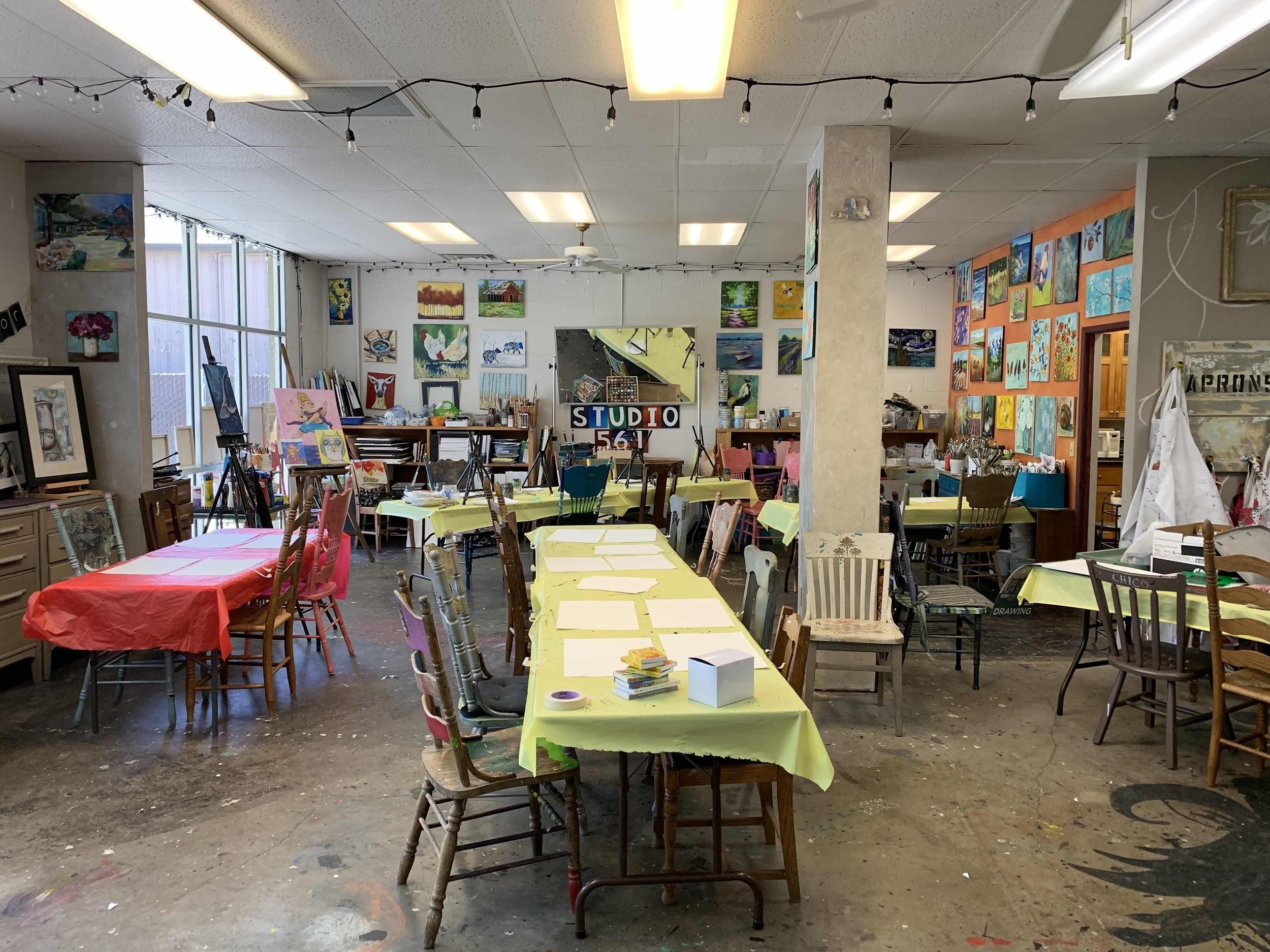
PTSD and the Art Therapist’s Role in Disaster Recovery
Many, if not all of the participants who have attended NorCATA’s support groups have PTSD in some form. Terrifying or threatening experiences, such as war, abuse, neglect, or natural disasters, leave traces that get stuck in our memories, emotions, and bodily experiences. When triggered, PTSD causes symptoms like traumatic flashbacks, panic or anxiety, irritability, memory lapses, numbness or even dissociation and suicidality. Traumatic memories hold the emotional, visual, physiological, and sensory experiences that were felt at the time of the event – essentially they are undigested or unprocessed memories. Common treatments for PTSD include talk therapy modalities such as Cognitive Behavioral Therapy (CBT), which aim to desensitize survivors through verbal means.
Research shows that the most common recall of traumatic imagery is in visual form. Additionally, the kinesthetic activity of art making activates sensory non-verbal pathways along with verbal neural pathways – using the integrative capacity of the brain. Art can bypass cognitive behaviors (talking, thinking, planning, judging), and intrusive images can become better organized with awareness of affect, or emotion. The concrete image on the page creates physical and emotional distance, allowing people to talk about an external event rather than an internal one. Objectifying imagery can also eliminate flooding of disturbing traumatic images and sensations.
The ability to tell one’s trauma story through art making or other expressive non-verbal means can help people identify coping strategies and internal strengths to begin their journey of healing. There is growing empirical support that a focus on the right hemisphere of the brain and the emotional power of images can reduce trauma symptoms and bring about healing more effectively than traditional talk therapy alone.
When I led the Workshop
May 11, 2019 was my day to facilitate a support group. A five-hour drive from my Peninsula home in the San Francisco Bay Area. All group participants that day continue to live with the pain of loss and complex PTSD long after the news cycle ended six months prior. I presented a number of interactive group art therapy activities, as well as mindful grounding, sensory awareness and stress-relieving exercises, psychoeducation about Acceptance and Commitment Therapy (ACT), the importance of doing one thing at a time, and ACT metaphors regarding cognitive fusion and experiential avoidance. All participants came to find a way to process their trauma and pain, but most of all, they told me that the five-hour workshop was a welcome distraction from the now constant traumatic memories and intrusive thoughts. I used round robin and mood states drawings, but the empirically supported Draw a Bridge directive elicited the most meaningful art content and symbolism – and extended discovery through group sharing. I left blank post-it notes on the tables and asked participants to write any worries or fears throughout the day and put them into a white takeout “gift” box. I suggested that we would decide as a group what to do with the box at the end our day together. They were more than happy to set aside their anxieties and all unanimously decided to throw out the box at the end of group. One participant tearfully described what it is like for her to continue to live in her home in Paradise; she says that she steps outside her door every day to see an ash-covered landscape of brick chimneys, rusted and burned out cars, “It feels like Dresden”.
Participants were absorbed in their process; there were tears, there was laughter, there were stories of the many local heroes in the close knit Chico community, which has welcomed with open arms an additional 30,000 displaced people from Paradise. One local hero, Steven Murray, the maintenance man at the Apple Tree Village Mobile Home Park in Paradise, is reported to have pulled 60 seniors out of the fire area, saving all their lives. He works at the Torres Women’s and Children’s shelter.
Left: This participant, a woman in her 20s, found images for a collage project responding to “What is intuitively meaningful or attractive to you?” She said this one spoke to her about hopes and dreams.
Center: This participant, a woman in her 60s, showed a very rickety footbridge over a steep chasm. She left herself out of the drawing. She is depressed and rarely uses color. She sees her life going forward as precarious with many emotional obstacles ahead. She entitled it: “Suspension Bridge”.
Right: This participant, a woman in her 50s, drew a house-tree-person using both hands simultaneously. She derived so much pleasure from her garden that was burned and can’t wait to plant another garden someday.
Volunteers and participants complete an evaluation at the end of every support group, sharing any observations, comments or personal reflections on how each month’s support group went over all. In my group, all participants expressed relief for several hours of “pure escape” from their overwhelming anxiety or depression or traumatic memories. At the beginning of the group, none of the participants felt that they would be able to talk about their work. After the bilateral scribble warmup, all participants were eager to comment about their process, and in some cases tell their trauma stories to the group – some for the first time – aloud. As I do with my private practice clients, I encouraged each participant to keep a visual journal for mark-making using both dominant and non-dominant hands – as an ongoing expressive outlet and a little bit of progress towards healing on a daily basis.
It is my hope that art therapists outside Northern and Southern California understand the role that we play in these increasingly common natural disasters that often lead to complex trauma, depression, anxiety, and other mental health and family conflict issues – long after the news cycle ends.
Driving through Paradise: Devastation and messages of love and support
The day after our group, I decided to drive the 16 miles southeast to Paradise. Jill at the AirBnb gave me a hand-drawn map to follow. She suggested I go with someone, but I ended up going alone. Driving through Paradise was an emotional and moving experience for me. I noticed that most mailboxes were wrapped with pink and black polka dot ribbons: stage one in the debris and hazardous material removal.
There were propane tanks out in the front of most lots where only charred chimneys remained. Some people had already started rebuilding wood fences. The stench of charred wood was palpable. I noticed hundreds of small yard signs advertising the services of insurance companies, demolition services, construction services, real estate brokers, and more, some legitimate, many not. Also lining the roads were hand-lettered signs of healing and support. I noticed the Paradise Art Center was still standing, but empty and closed up. Downtown area buildings were either completely destroyed or boarded up and vacated. The local Starbucks sustained minimal damage, and there were hand-lettered signs of love and support from patrons from all over the county and beyond. There was nothing recognizable in one ash-covered lot other than a charred bathtub, and a seemingly untouched and colorfully painted swing set in the yard. The juxtaposition was stark.
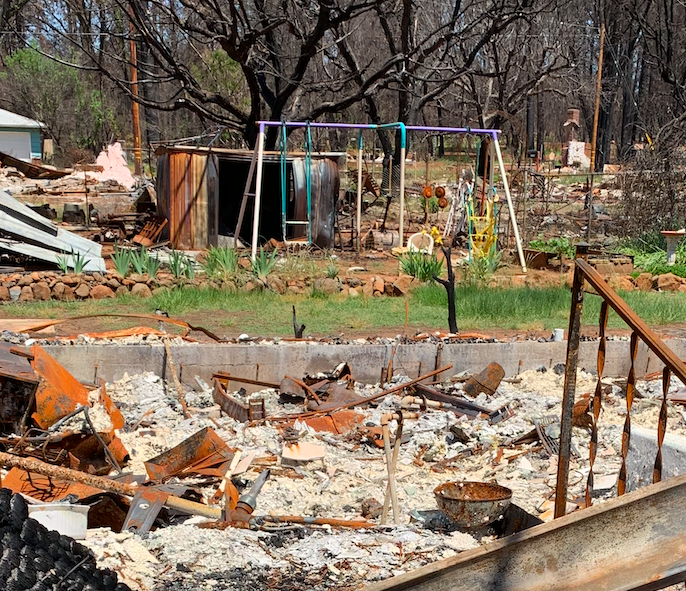
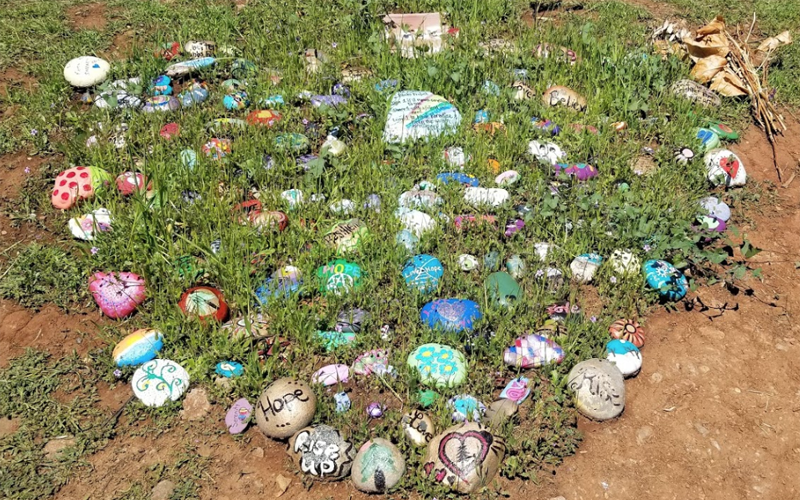
A Conversation with Paradise Locals
A man called to me from across the street, asking if I was his neighbor’s daughter. I said that I wasn’t. He and his wife and young son were surveying the damage near their own burned out foundation. I walked over to explain to him why I was there. I told him about the art therapy group I ran the day before in Chico. His face softened. He warned me that many residents own guns and will shoot to kill if they think they see looters. That was unnerving. Without my asking, he and his wife told me their escape story starting from the gale-force winds of November 7th, driving through walls of flames on November 8th to pick up their five kids from the local schools, to the heartbreaking news when they learned who of their neighbors perished. The man told me he knew he had PTSD three days after the fire, when his co-worker mentioned the word “smoke” and the hair on his arms and neck stood on end. His wife broke into tears as she told me that her mom, who still lives in Paradise, was diagnosed with lung cancer – only three months ago. They are preparing to rebuild; the home was in her family for sixty years. They said they would go to Chico to attend an art therapy group and said that what we are doing is literally saving lives.
Photo Gallery
Photos by Devora Weinapple. All artwork in Studio 561 is by Christine Mac Shane. Client artwork shared with permission.


